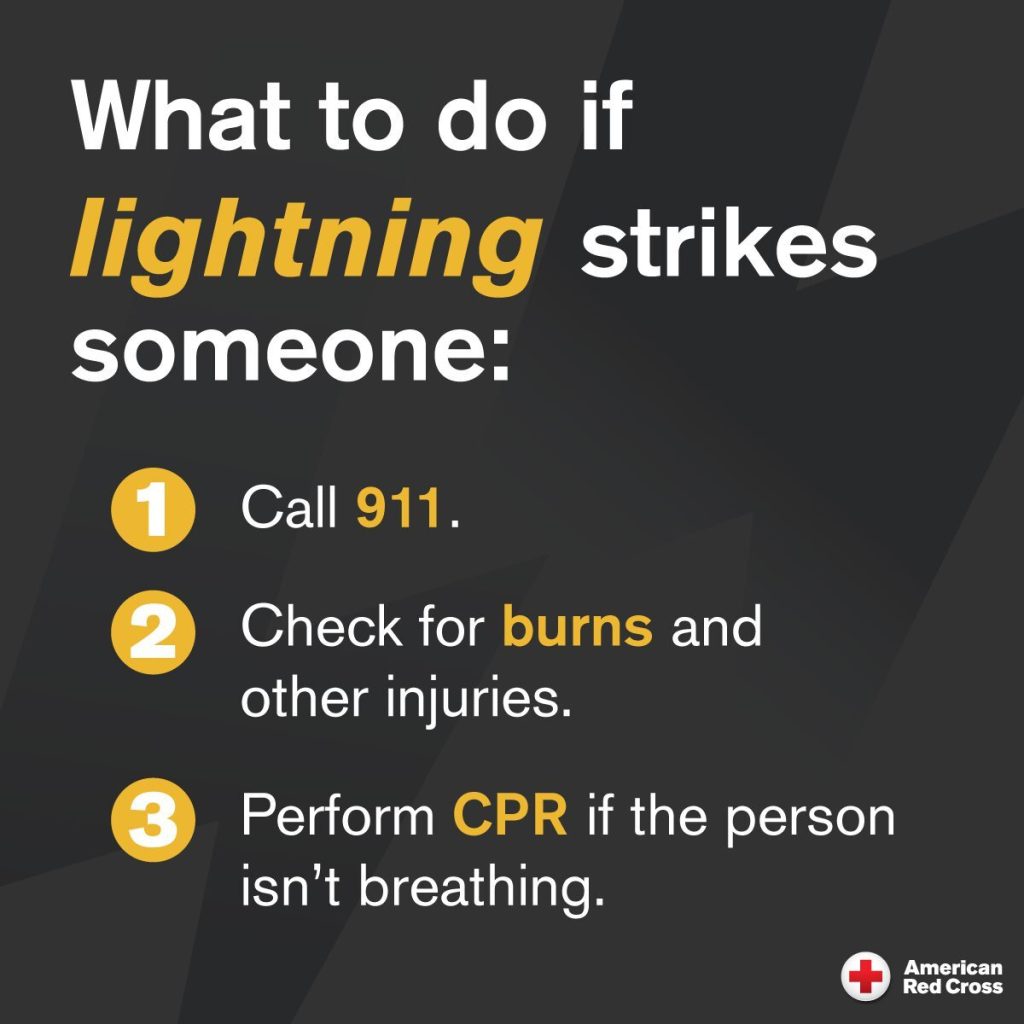By Susan West

Lightning: It’s sudden, it’s scary, and it can indeed strike in the same place twice. But while these bolts from the blue may seem random, there are lots of ways you can keep yourself safe. Here are some summertime scenarios to think about:
Scenario #1: You’re golfing and hear thunder.
DO: As the saying goes, “When thunder roars, go indoors.” You’re close enough to be struck, so seek shelter in a substantial, enclosed structure—not a shed, picnic shelter, tent, carport, or patio. There is no safe place outside during a storm, and an open field or beach is the most perilous place of all.
DON’T: Stand under a tree or near anything tall, such as a light pole. You don’t want to be the highest object in the area. Don’t even think about crouching; you won’t be protected, and lying flat may actually increase your chance of being impacted by a ground current.
Scenario #2: A beach day turns dark and stormy.
DO: Get out of the water and take shelter—in your car, if you have to. Lightning doesn’t strike the ocean as much as land, but when it does, it spreads out over the water, which acts as a conductor. It can hit nearby boats and even electrocute fish near the surface.
DON’T: Wait on the beach. Remember, the beach is a big, flat, sandy open space.
Scenario #3: Whew! The storm is raging, but you’re safely indoors.
DO: Stay away from windows, upper floors, and electrical appliances. Exterior doors can have metal both inside and out—like that doorknob. Any metal, wires, and pipes extending from the house could provide a deadly route for electricity coming in from outside.
DON’T: Take a shower, wash dishes, or use a landline phone. Metal doesn’t attract lightning, but it does conduct it—that is, it provides a path for the current to follow.
Scenario #4: You hit a nasty squall while driving.
DO: Stay in the car; pull over if you have to. Your metal-topped vehicle can provide shelter from lightning when no building is available. The tires aren’t what protect you; instead, the car’s metal body and frame conducts the current around you, through the tires, and into the ground.
DON’T: Touch any metal inside the car. Note: A convertible or soft-topped vehicle is not safe.
Scenario #5: Bases are loaded and your kid is at bat. The sky darkens and rumbles.
DO: Look for the person who’s been assigned to call off the game. There is someone assigned, right? About two-thirds of lightning deaths happen during outdoor recreational activities. Planning is essential for everyone’s safety.
DON’T: Wait until it’s too late. If you hear thunder, the storm is probably within 10 miles. Sorry, kid.
The nightmare scenario: Your friend was struck and has collapsed!
DO: Call 911 and provide first aid if you can. Want to learn CPR? The American Red Cross can help: www.redcross.org/take-a-class/CPR. This could make the difference between life and death.
DON’T: Be afraid to touch your friend. People struck by lightning do not carry a charge and are safe to touch. You will not be electrocuted.
